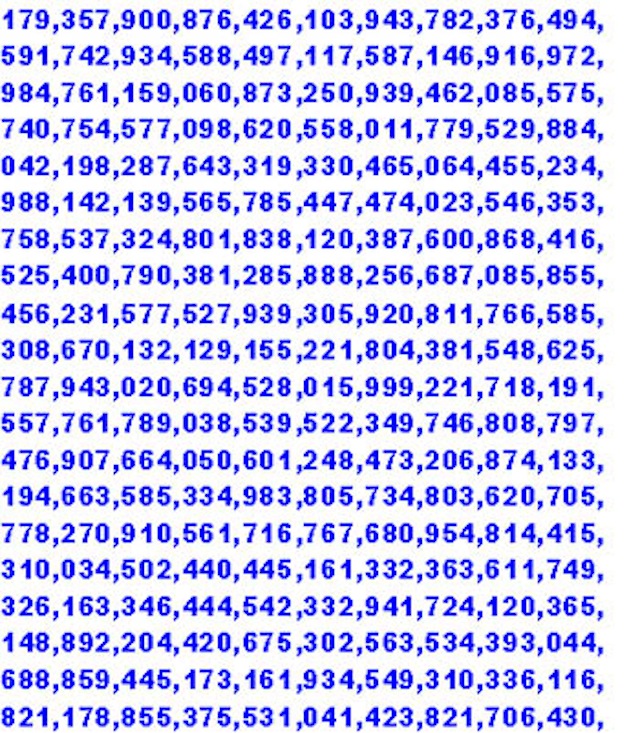

Euler used the following formula, an endless summation, to calculate the value of e up to 18 digits.Į = 1 + 1/1! + 1/2! + 1/3! + 1/4! + 1/5! ….Įuler also found that e could be represented as a continuous, infinite fraction and proved that it is an irrational number. In a nutshell, here’s the method of prime factorization using the Prime Factor Tree.Start dividing the given number by the smallest prime number which is 2.If 2 evenly divides the number, draw a diagonal down towards the left (branch of the tree) of the given number and write 2.Then, write the quotient by drawing a diagonal down towards the right.
#Give me a list of prime numbers how to#
Below is a factor tree for the number 52.Have you ever wondered how to create an irrational number? There are infinite irrational numbers between any two rational numbers, yet they are difficult to find. It can also be written in exponential form as 2 2 x 13 1.Īnother way to do prime factorization is to use a factor tree. If we put all of it together we have the factors 2 x 2 x 13 = 52. The orange divisor(s) above are the prime factors of the number 52.

Keep trying increasingly larger numbers until you find one that divides evenly.ġ3 ÷ 13 = 1 - No remainder! 13 is one of the factors! 5 is not a factor.ġ3 ÷ 7 = 1.8571 - This has a remainder. 3 is not a factor.ġ3 ÷ 5 = 2.6 - This has a remainder. Let's try the next prime numberġ3 ÷ 3 = 4.3333 - This has a remainder. Let us provide here the list of prime numbers that are present between 1 and 100, along with their factors and prime factorisation. There are a number of primes in the number system. Here are the first several prime factors: 2, 3, 5, 7, 11, 13, 17, 19, 23, 29.ĥ2 ÷ 2 = 26 - No remainder! 2 is one of the factors!Ģ6 ÷ 2 = 13 - No remainder! 2 is one of the factors!ġ3 ÷ 2 = 6.5 - There is a remainder. As we know, the prime numbers are the numbers which have only two factors which are 1 and the number itself. If it doesn't make sense yet, let's try it.


 0 kommentar(er)
0 kommentar(er)
